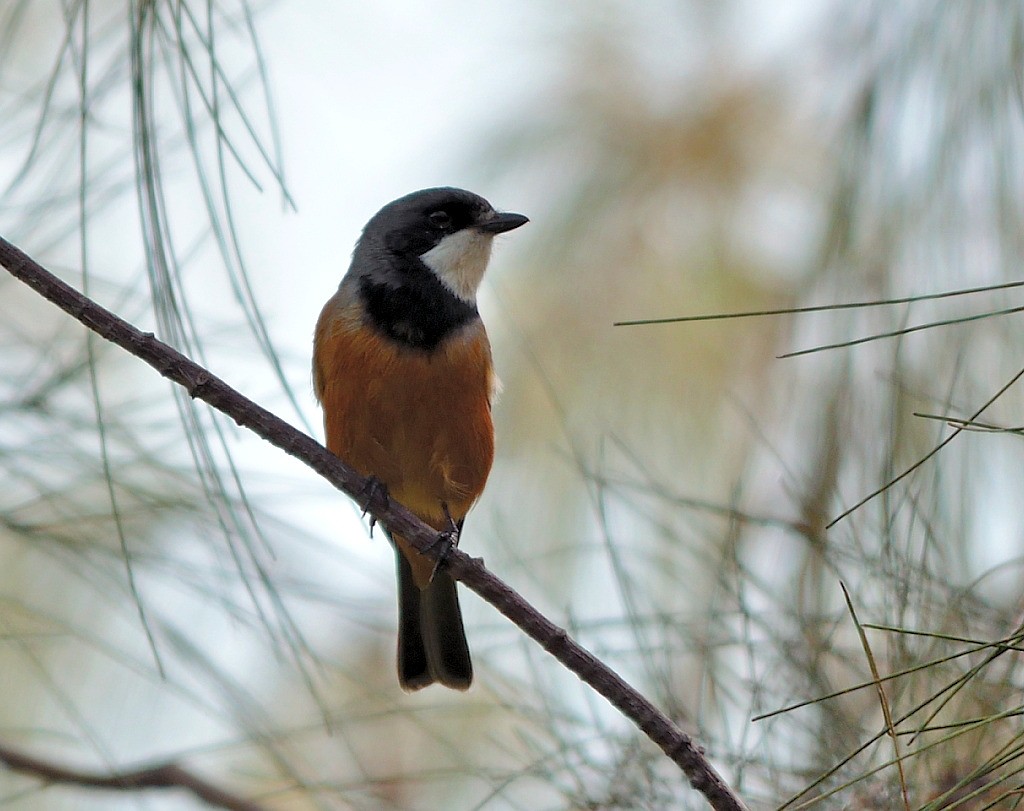Rufous Whistler
A species of Typical whistlers Scientific name : Pachycephala rufiventris Genus : Typical whistlers
Rufous Whistler, A species of Typical whistlers
Botanical name: Pachycephala rufiventris
Genus: Typical whistlers
Content
Description People often ask General Info
Description
Rufous whistlers are large-headed and stocky. They have short beaks and long tails (almost as long as the rest of the bird) which are very narrow and have sharp, forked tips. The species is sexually dimorphic. While females are typically dull brown or grey with streaked underbodies, males are predominantly dark-grey with white throats and (in most cases) a black mask that covers most of their head and some of their neck. These birds are between 16 and 18 centimetres (6.3–7.1 inches) in size, on average, and their normal weight is approximately 25 grams (0.9 ounces). The rufous whistler has a variety of musical calls which consist of a lengthy series of ringing notes. 
Size
18 cm
Colors
Brown
Black
Gray
White
Life Expectancy
15.2 years
Nest Placement
Tree
Feeding Habits
Rufous Whistler predominantly consumes insects, supplemented with seeds, fruit, and occasionally foliage. Unlike other whistlers, rufous Whistler exclusively forages above ground, avoiding terrestrial feeding.
Habitat
The rufous Whistler favors diverse habitats mainly consisting of dry eucalypt forests, woodlands, and riverine ecosystems, thriving in both temperate and tropical zones. Typically found at lower elevations up to 450 meters, these birds are adaptable to semi-arid areas and can also inhabit cypress pine woodlands, acacia shrublands, and mallee regions. Urban gardens and roadsides are among the disturbed areas they may occupy.
Dite type
Insectivorous
People often ask
General Info
Feeding Habits
Bird food type
Distribution Area
The rufous whistler can be found in forested areas, woodland, and shrubland, but also in gardens and farmland. It migrates seasonally, moving south in the spring and north in the autumn. In New Caledonia the species does not undertake migrations but is instead resident in areas of open forest and savannah. 
Species Status
Not globally threatened.
Scientific Classification
Phylum
Chordates Class
Birds Order
Perching birds Family
Whistlers and allies Genus
Typical whistlers Species
Rufous Whistler 